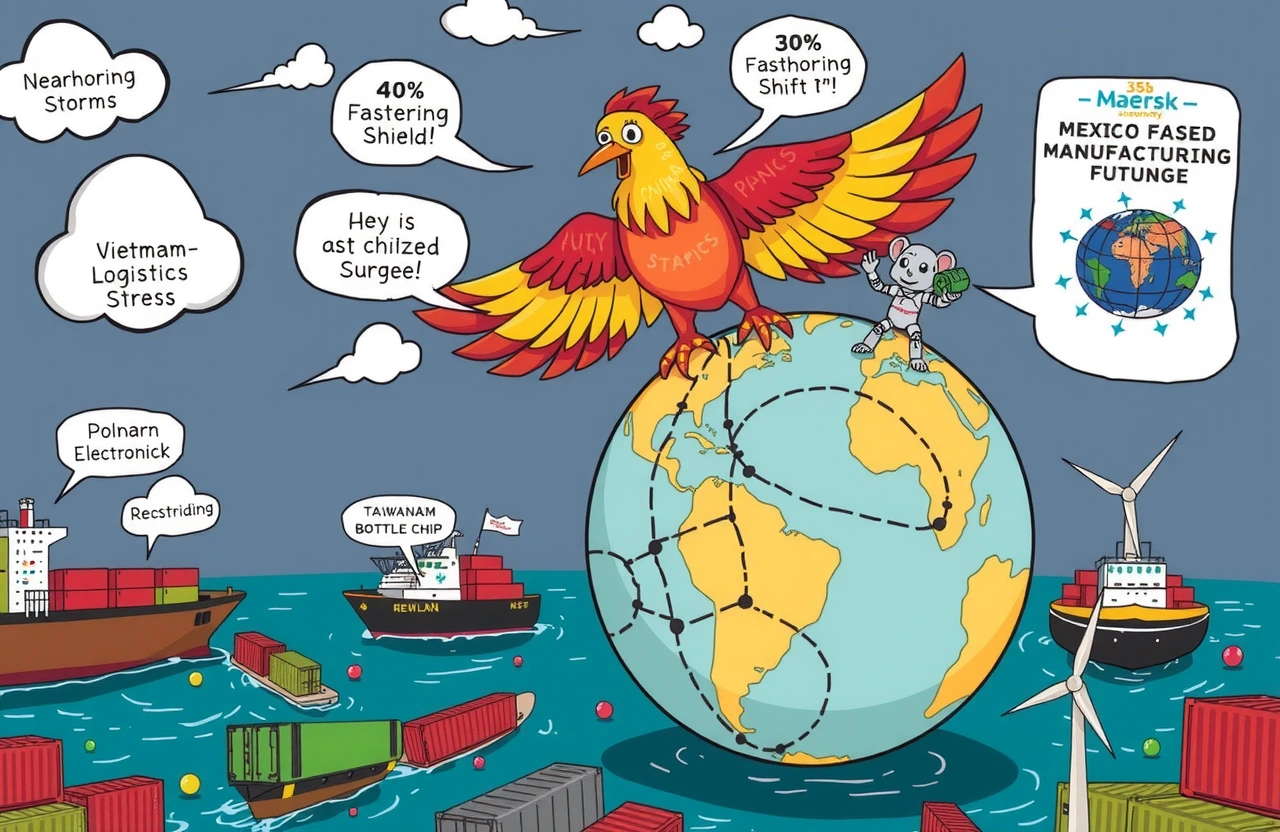When tariffs between major economies escalated in 2018, few predicted the seismic shifts ahead. Today, global supply chains resemble a complex puzzle being reassembled in real-time, transforming regional economies and rewriting corporate playbooks. This restructuring doesn’t merely reroute containers; it’s reshaping global hierarchies and spawning unprecedented opportunities in unlikely corners of the world economy. Understanding these evolving supply chains is critical for anyone navigating international commerce.
The Geopolitical Chessboard: Tariffs Driving Transformation
Trade disputes triggered synchronous supply chain realignments. The U.S.-China tariffs initiated the domino effect, with companies facing 25% duties seeking alternatives. Research from MAPI Foundation reveals 65% of multinationals altered sourcing strategies since 2019. Secondary tariffs like the EU’s carbon border tax accelerated the shift toward localized supply chains.
The China Exodus Accelerates
Companies rapidly implemented China-plus-one strategies with distinct patterns: – Electronics firms prioritized Vietnam (exports up 28% since 2020) – Textiles expanded in Bangladesh and Cambodia – Automotive shifted toward Mexico which now supplies 40% of U.S. auto parts according to BTS data What began as tariff avoidance evolved into risk mitigation after pandemic disruptions. AsUnctad reports, the recalibration of supply chains prioritizes flexibility over pure cost savings.
Nearshoring Under Pressure
Mexico recorded $35 billion in new manufacturing investment in 2023 alone as companies sought: – Reduced logistics costs – Faster time-to-market – Proximity to U.S. markets Challenges persist, including infrastructure gaps and skills mismatches that complicate this transition.
Technology as Supply Chain Savior
Supply chain upheaval catalyzed record investments in technological solutions. Gartner data shows 78% of companies prioritized digital transformation budgets since 2020, focusing on systems that mitigate trade war impacts.
AI and Predictive Analytics
Companies leverage AI to model tariff scenarios and optimize routing: – IBM’s Planning Analytics predicts tariff impacts 4 weeks faster – J.P. Morgan’s blockchain platform reduces customs delays by 40% These technologies embed resilience into supply chains by enabling rapid pivots when trade policies change.
Automation’s Role in Relocation
Automation enables production moves previously considered cost-prohibitive: – Advanced robotics counterbalance higher labor costs – Lights-out factories minimize manufacturing footprints – 3D printing localizes component production near consumer markets Industry leaders like Dyson now position production geographically based on energy access and political stability indices rather than wages alone.
Unexpected Economic Triumphs and Disruptions
The reconfiguration creates new manufacturing monarchs while exposing vulnerabilities. These shifting supply chains redistribute economic power in unprecedented ways.
Emerging Market Breakouts
Countries capitalize on trade tensions: – Vietnam’s electronics exports surged to $97 billion in 2023 – Poland has become Europe’s supply chain gateway with $14.5B in new investments However, infrastructure constraints have caused bottlenecks in previously unready regions.
Specialized Sectors Suffering
Certain industries face disproportionate impacts: – Mature semiconductor supply chains struggle with relocation – Agricultural producers endure costly logistics pivots – Specialty chemical networks require years to reconfigure IndustryWeek data shows 54% of manufacturers reported increased component costs due to forced relocation.
Sustainability Meets Supply Chain Strategy
Environmental priorities now influence restructuring decisions. Eurostat reports 63% percentage of EU importers now evaluate carbon footprint alongside costs.
Green Logistics Influence
Tariff-induced relocations integrate eco-considerations: – Shorter maritime routes cut emissions – Regional suppliers reduce transport-related carbon – EV trucking enables zero-emission last-mile operations Maersk’s carbon-neutral shipping corridors exemplify this convergence.
Circular Economy Innovations
Reshoring enables circular business models: – BMW reclaims 98% of EV batteries in European plants – Textile firms like H&M establish regional recycling loops – Nearshored manufacturing facilitates parts recovery This reduces resource dependencies exposed during trade disruptions.
Future-Proofing Your Global Network
Building agile supply chains requires strategic approaches. McKinsey outlines three pillars: redundancy, diversification, and digitization.
Mapping the Multi-Source Approach
Companies establish operational resilience through: – Spread manufacturing across at least three regions – Develop vetted backup suppliers for critical components – Maintain raw material buffer stocks for 45-day scenarios The volatile supply chains umbrella requires layered protection against disruptions.
Agility-First Leadership Mindset
Executive priorities must shift: – Reward flexibility over efficiency metrics – Incorporate geopolitical analysis into planning cycles – Foster multi-disciplinary risk teams Industry leaders like Intel demonstrate this by relocating production options quarterly regardless of actual moves.
The Road Ahead: Thriving Amid Uncertainty
Trade conflicts fundamentally rewired global commerce, creating winners beyond traditional hubs. Vietnam now manufactures semiconductor components. Mexico builds electric vehicles. India exports smartphones. The dynamic supply chains evolution offers opportunities where barriers once stood. Assess your vulnerabilities. Evaluate emerging corridors. Transform your network before the next disruption arrives. The stability of tomorrow’s supply chains begins with your actions today.



